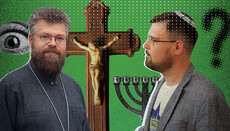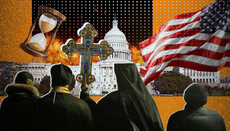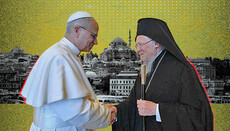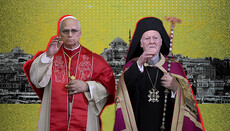Feofania revisited: Outcomes and omissions of the 2022 UOC Council
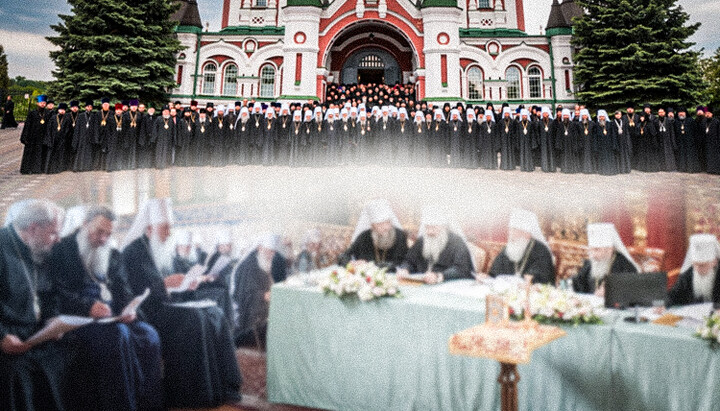
Three years have passed since the UOC Council in Feofania. It is now possible to assess some of the outcomes and the results of its decisions.
Brief Ecclesiastical Background
The Metropolis of Kyiv was established in 988 with the Baptism of Rus'. Structurally, it was a group of dioceses united into a metropolitan district, headed by the Metropolitan of Kyiv and subordinated to the Church of Constantinople. The relationship with Constantinople was mainly that metropolitans were appointed from there, and Rus' sent generous gifts in return. The Metropolis was periodically split and reunited due to political reasons, especially after Kyiv's decline, when two political centers emerged: the Galicia-Volhynia principality and the Vladimir-Suzdal principality. All decisions were made in Constantinople.
This arrangement lasted until 1686, when the Kyiv Metropolis was, by decision of the Patriarchate of Constantinople, transferred "forever" to the jurisdiction of the Moscow Patriarchate. This was de facto recognized by all Local Churches at the time, whose representatives concelebrated with ROC hierarchs and clergy without canonical objections. From 1918 until the end of the USSR, the Church in Ukraine existed as the Ukrainian Exarchate of the Moscow Patriarchate.
In 1990, it became the autonomous Ukrainian Orthodox Church. In practice, it was fully self-governing and self-reliant. However, there were several formal connections with the Moscow Patriarchate:
- The UOC was linked to other Local Churches through the ROC;
- The Primate of the UOC received a blessing from the Moscow Patriarch;
- The Patriarch's name was proclaimed during services;
- The UOC Primate was a permanent member of the ROC Synod;
- The UOC Bishops' Council operated under ROC Councils' resolutions.
Despite these links, the ROC never interfered in UOC's internal matters. The ROC governing bodies never overturned UOC's decisions, and the Moscow Patriarch always blessed the newly elected UOC Primate. The UOC's canonical status was defined as autonomy within the ROC.
To understand how "dependent" the UOC was, one can compare it to the OCU's relationship with Constantinople, despite the latter's proclaimed autocephaly:
- The OCU is linked to Orthodoxy through Constantinople;
- The Tomos from Constantinople has primacy over the OCU Statute;
- Issues not covered in the Statute are resolved by a commission appointed by Constantinople;
- The OCU may minister to Ukrainians only within Ukraine; beyond that, Constantinople has jurisdiction;
- The OCU must apply to the Phanar for resolutions on important issues, which the Phanar makes independently;
- The Phanar has its own structures (stauropegia) in Ukraine;
- The OCU receives chrism from Constantinople;
- The Ecumenical Patriarch is the final court of appeal for the OCU and may overturn any of its decisions.
Clearly, the OCU's dependence on Constantinople is far greater than the UOC's dependence on the ROC in 1990. Yet the OCU calls itself autocephalous, not merely autonomous.
Thus, by the time of the Council in Feofania on May 27, 2022, the UOC was already practically independent in all respects. Its de facto autonomy exceeded formal autonomy. However, several factors still prevented a declaration of full autocephaly:
1. The lack of a universally accepted procedure for granting autocephaly in Orthodoxy and ongoing debates on the matter.
2. The absence of consensus among UOC hierarchs, clergy, and laity on the need for autocephaly.
Then came a critical factor: the war.
Brief Church-State Political Background
Historically, the Church in Rus' often followed or at least did not oppose secular authorities, modeling itself on the Church of Constantinople, which depended on the emperor – first Byzantine, then Ottoman. It usually submitted to state power.
This was especially evident in the part of the Kyiv Metropolis that evolved into the ROC after relocating to Moscow. Its development was greatly aided by the fact that Moscow's rulers – princes, then tsars, and emperors – were Orthodox. Meanwhile, the other part of the Kyiv Metropolis, centered in Kyiv and part of the Galicia-Volhynia principality, ended up under the Polish-Lithuanian Commonwealth, where Catholicism was dominant.
The Moscow Church almost always followed its secular rulers' will. Few exceptions exist, such as when Metropolitan Philip in the 16th century criticized Tsar John the Terrible – but his fellow bishops quickly deposed him.
In contrast, the Kyiv Metropolis had a long history of resisting secular control, even under extremely difficult conditions. For example, during the Union of Brest in 1596, the Commonwealth tried to submit the Orthodox Church to the Vatican. The parallel with today is clear: Ukraine's authorities now seek to subordinate the Church to the OCU project. But as in the past, the Church has resisted. In the 17th century, it chose to endure persecution rather than betray Orthodoxy.
Examining recent decades shows that both the UOC and ROC shaped their church-state relations in line with their historical experiences. This became especially noticeable around 2008. That year, the UOC refused to obey President Yushchenko's administration's push to use the visit of Patriarch Bartholomew to Kyiv to create a single national Church. Meanwhile, in the ROC, Metropolitan Kirill succeeded Patriarch Alexy and gradually brought church-state relations to a closer level than before.
On February 24, 2022, Russia launched a full-scale invasion of Ukraine, posing new challenges for both the UOC and ROC.
The Russian Church faced a stark choice: between Gospel truth and loyalty to the state. Before the war, these could still be reconciled. But with the war, the ROC faced a dilemma: one or the other.
During the war, hundreds of Ukrainian towns and villages were destroyed. Tens of thousands died; millions lost homes and livelihoods. Over 300 UOC churches were partially or fully destroyed. No Christian could possibly call this a "holy war" or "God-pleasing act." Yet the ROC did so.
There were no formal documents from the ROC hierarchy supporting the war, and likely many believers did not support it. But the ROC leadership's rhetoric on the "Special Military Operation" differed little from that of the Russian state.
Another crucial point: the ROC leadership showed no compassion for Ukrainians. In its rhetoric, Ukrainians and Russians are one flock. But in practice, this was just the other way about. When Russian civilians were harmed (e.g., in Kursk region), Patriarch Kirill issued messages of support. But when Ukrainians suffered far greater losses, Patriarch Kirill's only message was silence.
Also notable is the coordination between the ROC hierarchy and the Russian army. Regions occupied by the Russian military were soon placed under direct ROC's jurisdiction. The ROC removed legitimate UOC bishops and replaced them – without consulting the UOC Synod or Metropolitan Onuphry – despite the 1990 ROC Bishops' Council and Patriarch Alexy II's Charter granting the UOC full internal autonomy.
Most of these developments unfolded after May 27, 2022, but their foundations were visible from the start of the full-scale war.
As a church-historical premise for the Feofania Council, it should be noted that, at that time, the state had not yet launched full-scale persecution of the UOC. On the contrary, government officials were saying that the war should not be a reason to divide society on religious grounds and that such attempts served Russian interests. Of course, there was already pressure on the Church, attempts to discredit it, and church seizures – but not to the extent seen today.
Goals and Decisions of the Council
We will not dwell on the proceedings of the Council itself but will focus instead on the decisions it made and what motivated them. In our view, the Council in Feofania had three key objectives:
- To remain faithful to the Gospel teachings;
- To preserve the unity of the UOC;
- To dissociate itself from the Russian Church, whose actions, unfortunately, ceased to fully align with the teachings of Christ.
The canonical ties with the ROC allowed many to consider the UOC as part of it and to project onto it support for the Russian authorities and the war. Therefore, to remain on the side of the Gospel, it was necessary to break the UOC away from the ROC in all respects, maintaining only Eucharistic communion, as with all other Local Churches. A clear disagreement with the ROC’s position had to be expressed and reflected in the UOC Statute.
To this end, the Council adopted the following resolutions:
- The Council condemned the war as a violation of God's commandment "Thou shalt not kill" (Ex. 20:13) and expressed condolences to all who suffered from the war.
- The UOC voiced its disagreement with the position of Patriarch Kirill of Moscow and All Rus’ regarding the war in Ukraine.
- The Council adopted corresponding amendments to the Statute on the governance of the Ukrainian Orthodox Church, affirming the full independence and self-governance of the UOC.
- The Council discussed the resumption of chrism-making (myrovarennia) in the UOC.
The last point was formulated rather vaguely, but in practice, the UOC did resume myrrh-boiling a hallmark of autocephalous Local Churches (though not all of them do this). The Council also decided to minister to Ukrainian refugees abroad and to establish UOC parishes in other countries, which is likewise a prerogative of a Local Church.
Through these decisions, the UOC severed all administrative ties with the ROC.
Before Russia's full-scale invasion, there were differing views within the UOC regarding its canonical structure. Some called for the declaration of full autocephaly; others, on the contrary, advocated for closer ties with the ROC. The status of autonomy suited most and allowed for unity. But the war disrupted this balance. His Beatitude Metropolitan Onuphry put it this way: “In the first weeks of the war, many of our clergy began expressing disagreement with the words and actions of Patriarch Kirill. Individual parishes and even entire dioceses in various regions of Ukraine began to cease commemorating the Moscow Patriarch during services.”
In this context, further delay in distancing from the ROC threatened the UOC with inevitable schism and a catastrophic destabilization of church governance – especially given that Patriarch Kirill had in fact already disassociated himself from the UOC and Ukrainian faithful by subordinating Ukrainian dioceses in occupied territories to himself. The ROC’s justification of these actions by wartime realities was unconvincing, especially since the Council made a separate decision for dioceses in war zones.
One such decision stated: “During martial law, when communication between dioceses and the Church’s governing center is complicated or absent, the Council finds it appropriate to grant diocesan bishops the right to independently make decisions on diocesan matters that normally fall under the jurisdiction of the Holy Synod or the Primate of the UOC, with subsequent notification of the hierarchy once communication is restored.”
This decision empowered bishops in occupied territories to manage their dioceses independently without needing to turn to Kyiv, while still remaining part of the UOC. Thus, episcopal governance was preserved, and there was no need to appeal to the ROC.
Another important resolution of the Council concerned dialogue with the OCU. The UOC outlined conditions under which such a dialogue would be possible:
- The issue of non-canonical ordinations of OCU hierarchs must be addressed;
- The OCU must acknowledge its dependence on the Ecumenical Patriarchate;
- It must cease the practice of church seizures and all forms of violence.
Only under these conditions could a dialogue on unification with the OCU be considered in accordance with the Gospel and church canons. The OCU refused to fulfill these conditions.
Conclusions
In answering the question posed in the title of this article, one can say this: the Council in Feofania enabled the Ukrainian Orthodox Church to remain the true Church of Christ, to hold fast to the Gospel, and not to fall into schism. It preserved the unity of the Church. Despite fierce repression, not a single bishop left for the OCU after the Council. The number of priests and laypeople who departed was minuscule. The UOC did not bend to government pressure – it upheld its canonical integrity and the purity of its faith. And for this, the Council in Feofania deserves great credit.
The Council could not stop the state persecution of the UOC – but that is the fault of the authorities, not the Church. The only way to avoid such persecution would have been to dissolve the Church and surrender to the OCU – at the cost of identity, truth, and faithfulness.
Three years have now passed since the Council. That is time enough to say with confidence: the overwhelming majority of the UOC has accepted its decisions and lives in accordance with them. Not a single Local Church has challenged or denounced the Council’s resolutions. None has claimed that the UOC fell into schism or lost divine grace. No one has broken communion with the Ukrainian Orthodox Church. On the contrary – many have expressed support, solidarity, and respect.
The Council’s decisions have been received at the pan-Orthodox level. And that, ultimately, is the true measure of their ecclesiastical legitimacy.
